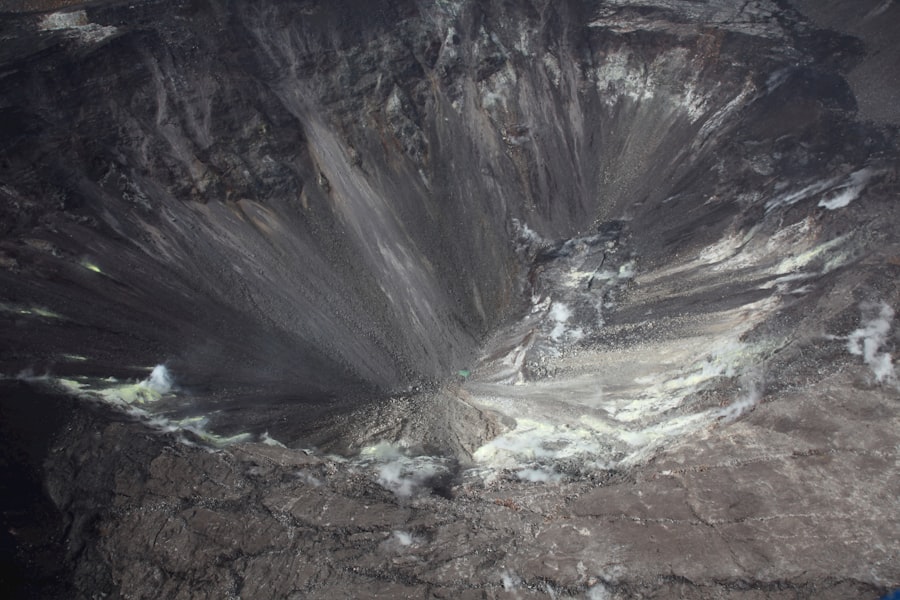Artificial Intelligence (AI) has emerged as a transformative force in various sectors, and disaster prevention is no exception. The integration of AI technologies into disaster management systems has the potential to revolutionize how we prepare for, respond to, and recover from natural disasters. By harnessing vast amounts of data and employing sophisticated algorithms, AI can enhance our understanding of disaster patterns, improve predictive capabilities, and ultimately save lives.
The role of AI in disaster prevention is multifaceted, encompassing everything from risk assessment to real-time monitoring and response coordination. One of the most significant advantages of AI in disaster prevention is its ability to analyze complex datasets at unprecedented speeds. Traditional methods of data analysis often fall short when it comes to processing the sheer volume of information generated by environmental sensors, satellite imagery, and social media feeds.
AI algorithms can sift through this data, identifying trends and anomalies that may indicate an impending disaster. This capability not only aids in early detection but also allows for more informed decision-making by emergency management agencies. As a result, communities can be better prepared to face the challenges posed by natural disasters. AI systems are revolutionizing industries, for more information visit AI systems.
Key Takeaways
- AI plays a crucial role in disaster prevention by providing early warning systems and identifying vulnerable areas.
- Early warning systems for natural disasters are essential in minimizing the impact of disasters and saving lives.
- AI can be utilized to identify vulnerable areas and populations, allowing for targeted preventive measures and evacuation plans.
- Implementing preventive evacuation plans based on AI-driven data can significantly reduce the impact of disasters on communities.
- Timely alerts are crucial in disaster prevention, and AI-driven technologies can help in providing real-time information to at-risk populations.
Early Warning Systems for Natural Disasters
Early warning systems (EWS) are critical components of disaster management, providing timely alerts that can significantly reduce the impact of natural disasters.
Traditional EWS often rely on historical data and predefined thresholds to trigger alerts, which can lead to false alarms or missed opportunities for timely intervention.
In contrast, AI-driven EWS leverage machine learning algorithms to analyze real-time data from various sources, including weather forecasts, seismic activity, and oceanographic conditions. By continuously learning from new data, AI can refine its predictive models, leading to more precise forecasts of impending disasters such as hurricanes, floods, or earthquakes. For instance, machine learning models can analyze patterns in atmospheric conditions to predict severe weather events with greater accuracy than traditional methods.
This enhanced predictive capability allows authorities to issue warnings well in advance, giving communities the time they need to prepare and respond effectively. Moreover, AI can also help optimize the dissemination of alerts, ensuring that critical information reaches those who need it most.
Utilizing AI to Identify Vulnerable Areas

Identifying vulnerable areas is a crucial step in disaster prevention, as it enables targeted interventions and resource allocation. AI technologies can significantly enhance this process by analyzing geographic, demographic, and socio-economic data to pinpoint regions at higher risk of disaster impacts. For example, machine learning algorithms can assess factors such as population density, infrastructure resilience, and historical disaster data to create vulnerability maps that highlight areas most at risk.
These vulnerability assessments are invaluable for local governments and disaster response agencies as they inform planning and preparedness efforts. By understanding which communities are most susceptible to disasters, authorities can prioritize investments in infrastructure improvements, emergency services, and public awareness campaigns. Furthermore, AI can facilitate ongoing monitoring of these vulnerable areas, allowing for dynamic updates to risk assessments as conditions change over time.
This proactive approach not only enhances community resilience but also fosters a culture of preparedness among residents.
Implementing Preventive Evacuation Plans
Effective evacuation plans are essential for minimizing loss of life during natural disasters. AI can play a transformative role in developing and implementing these plans by analyzing real-time data on population movements, traffic patterns, and environmental conditions. By simulating various disaster scenarios, AI algorithms can identify optimal evacuation routes and strategies that take into account the unique characteristics of each community.
Moreover, AI-driven tools can assist in coordinating evacuation efforts by providing real-time updates on road conditions and potential hazards. For instance, during a hurricane evacuation, AI systems can analyze traffic flow data to recommend alternative routes that avoid congestion or hazardous areas. This level of situational awareness is crucial for ensuring that evacuations are conducted efficiently and safely.
The Importance of Timely Alerts in Disaster Prevention
Timely alerts are a cornerstone of effective disaster prevention strategies. The speed at which information is disseminated can mean the difference between life and death during a natural disaster. AI technologies enhance the timeliness of alerts by automating data analysis and streamlining communication processes.
For example, machine learning algorithms can quickly analyze incoming data from various sources to determine whether an alert should be issued and at what level of urgency. Furthermore, AI can optimize the delivery of alerts by tailoring messages to specific audiences based on their location and needs. This personalized approach ensures that critical information reaches individuals who may be most affected by an impending disaster.
In addition to improving the speed and accuracy of alerts, AI-driven systems can also facilitate two-way communication between authorities and communities. This engagement allows residents to report their conditions or seek assistance during emergencies, further enhancing the overall effectiveness of disaster response efforts.
AI-Driven Technologies for Disaster Risk Reduction

Predictive Analytics for Proactive Measures
For instance, predictive analytics powered by AI can help identify potential hazards and assess their likelihood of occurrence based on historical data and current conditions. This information is invaluable for policymakers seeking to implement proactive measures that reduce vulnerability.
Real-Time Monitoring with AI Technologies
In addition to predictive analytics, AI technologies such as drones and remote sensing are being utilized for real-time monitoring of environmental conditions. Drones equipped with advanced sensors can capture high-resolution imagery of affected areas, providing critical insights into damage assessment and recovery efforts.
Enhancing Preparedness and Resilience
Similarly, satellite imagery analyzed through AI algorithms can detect changes in land use or vegetation health that may indicate increased risk for wildfires or flooding. By integrating these technologies into disaster risk reduction strategies, communities can enhance their preparedness and resilience against future disasters.
Community Engagement and Participation in Disaster Prevention
Community engagement is a vital aspect of effective disaster prevention strategies. While technology plays a significant role in enhancing preparedness efforts, it is equally important to involve local residents in the planning process. AI can facilitate community participation by providing platforms for residents to share their insights and experiences related to disaster risks in their areas.
This collaborative approach ensures that local knowledge is incorporated into decision-making processes. Moreover, AI-driven tools can help educate communities about disaster preparedness through interactive simulations and training programs. By leveraging gamification techniques, these tools can engage residents in learning about evacuation routes, emergency kits, and communication protocols during disasters.
This proactive engagement fosters a culture of preparedness within communities, empowering individuals to take ownership of their safety and resilience.
Future Prospects and Challenges in AI-Driven Disaster Prevention
As we look toward the future, the prospects for AI-driven disaster prevention are both exciting and challenging. The continued advancement of machine learning algorithms and data analytics will undoubtedly enhance our ability to predict and respond to natural disasters more effectively than ever before. However, several challenges must be addressed to fully realize the potential of these technologies.
One significant challenge lies in ensuring equitable access to AI-driven tools across diverse communities. Vulnerable populations may lack the resources or infrastructure necessary to benefit from advanced technologies, leading to disparities in disaster preparedness and response capabilities. Additionally, ethical considerations surrounding data privacy and security must be prioritized as we increasingly rely on personal data for predictive modeling.
In conclusion, while the integration of AI into disaster prevention strategies holds immense promise for enhancing our resilience against natural disasters, it is essential to approach these advancements thoughtfully and inclusively. By fostering collaboration between technology developers, policymakers, and communities, we can create a future where AI serves as a powerful ally in safeguarding lives and livelihoods from the impacts of natural disasters.
AI-driven Disaster Prevention is a crucial aspect of ensuring the safety and well-being of communities in the face of natural disasters. In a related article on Entering the Metaverse: Creating Your Virtual Identity, the concept of virtual reality and digital spaces is explored in depth. This technology could potentially revolutionize the way early warning systems for natural disasters are implemented, allowing for more accurate alerts in vulnerable areas and better preventive evacuation plans. By leveraging the power of AI and virtual reality, we can better prepare for and respond to disasters, ultimately saving lives and minimizing damage.
FAQs
What is AI-driven disaster prevention?
AI-driven disaster prevention refers to the use of artificial intelligence technology to predict, detect, and mitigate the impact of natural disasters such as earthquakes, floods, hurricanes, and wildfires. This technology uses data analysis, machine learning, and predictive modeling to provide early warning systems, alerts in vulnerable areas, and preventive evacuation plans.
How does AI-driven disaster prevention work?
AI-driven disaster prevention works by analyzing large amounts of data from various sources such as satellite imagery, weather patterns, seismic activity, and historical disaster records. Machine learning algorithms are then used to identify patterns and predict potential disasters, allowing for early warnings to be issued and preventive measures to be implemented.
What are the benefits of AI-driven disaster prevention?
The benefits of AI-driven disaster prevention include improved accuracy in predicting natural disasters, faster response times, reduced human error, and the ability to provide targeted alerts and evacuation plans for vulnerable areas. This technology can also help minimize the impact of disasters on communities and infrastructure.
What are some examples of AI-driven disaster prevention technologies?
Examples of AI-driven disaster prevention technologies include earthquake early warning systems, flood monitoring and prediction tools, wildfire detection and alert systems, and hurricane tracking and forecasting models. These technologies are designed to provide real-time information and actionable insights to help mitigate the impact of natural disasters.
How can AI-driven disaster prevention be implemented in vulnerable areas?
AI-driven disaster prevention can be implemented in vulnerable areas by integrating the technology with existing disaster management systems, infrastructure, and communication networks. This may involve collaboration between government agencies, emergency responders, and technology providers to ensure that early warning systems, alerts, and evacuation plans are effectively deployed in at-risk communities.











Leave a Reply